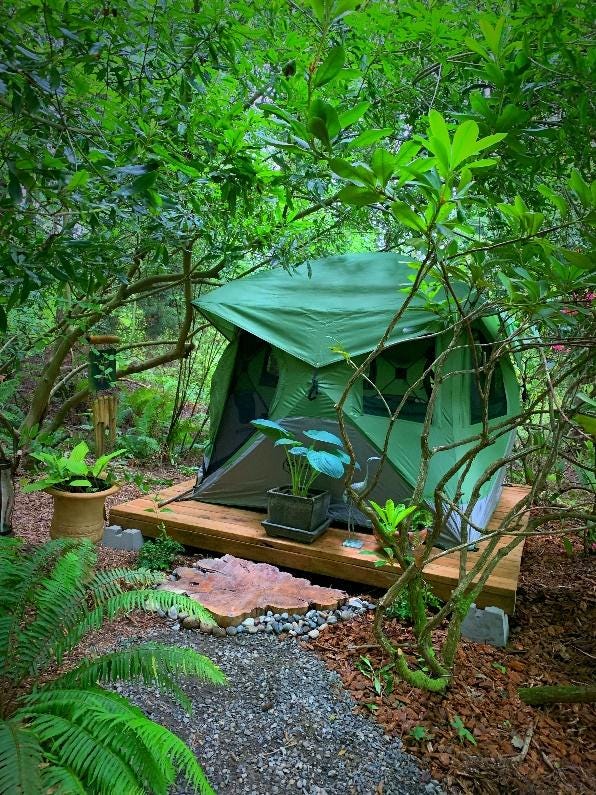I'm Aaron Jacklin, and this is Explaining Crime, an independent newsletter that helps you explain crime to your audience.
What I Do is a weekly Explaining Crime series that features a single person in the crime content space and their answers to a set series of questions about what they do. The “crime content space” includes crime news, narrative nonfiction, investigative journalism, academia, advocacy, and, of course, true crime. Accordingly, What I Do will feature a wide variety of people, including academics, journalists, podcasters, authors, advocates, YouTubers, and more.
What I Do #7: Jan Canty
Where are you based?
Pacific Northwest
What do you do?
I’m a psychologist and an advocate for other so-called homicide survivors. I can speak to this subjectively and professionally. (“Homicide survivor” is a term used to describe people whose lives have been turned upside down due to murder of a person or persons they loved.)
Who is your audience?
The focus of my work is with other homicide-survivors, their supporters and people whose professions we cross paths with – such as homicide detectives, forensic investigators, crime scene cleanup crews, funeral directors, crime journalists, district attorneys and health care providers.
What are the most useful tools in your work?
Networking is my most useful tool. There is little to no “cross-talk” between all of the change agents homicide survivors must interact with. It is fractured. Networking helps address this. Detectives know little about homicide survivor support groups to refer people to. Grief therapists have little understanding of what prosecutors do, so aren’t in a great position to help us anticipate upcoming court hearings. We are in the center of this network and must coordinate with all the change agents at the very time when we are overcome with grief, fatigue, fear and stigma. It’s a steep learning curve. So, the most useful tool I believe I offer is facilitation between these various factions.
The need for coordination between all these change agents is especially critical for orphaned young adults who are unprepared to manage adulthood as a result of the loss of their parents and whose peers are of little help. (Recommended reading “Beautiful Ashes” by Shelley Edwards-Jorgensen).
Who or what are the most useful sources of information in your work?
Other homicide survivors and experienced professionals directly involved in dealing with death are very useful (as opposed to those in academia or true crime podcasters and most journalists). There is no substitute for first-person information. A great book addressing the need for change in crime reporting is from Tamara Cherry entitled “The Trauma Beat.”
What’s your process?
I find ideas from the news, from support groups and guests on my podcast. From there I decide what is the best format for this idea. Social media? Book chapter? Podcast Interview? I will then research the idea in depth and begin formulating my ideas. For example, the topic of forgiveness of the perpetrator came up during a podcast interview. I developed a blog article entitled “Forgive the Murderer of our Loved One?” It’s not unusual to re-purpose a topic idea in another setting.
What’s the key to getting through to your audience?
Trust and personal experience. Once people understand that my interest in murder’s aftermath isn’t academic or voyeuristic, but that it springs from personal experience and professional knowledge of human behavior, doors open.
How do you distribute or otherwise share your work?
I use different modalities. As I said, I have a blog on my website that people or agencies use to gather short articles on a variety of topics. Some recent topics pertained to the loneliness that follows murder (lack of support) and another with the exploitation of grieving families by the funeral industry and what to do about it. I also do a lot of public speaking with audiences who are not homicide survivors. I have written two books (a memoir, “A Life Divided” and a reference book “What Now? Navigating the Aftermath of Homicide and Suicide”). I have a podcast (“Domino Effect of Murder”) which recently won a people’s award and I have appeared on many other podcasts as a guest. I also post fairly regularly on Tik Tok. I’m always trying to get the message out: “We need help. Don’t believe the myths that circulate. Don’t add to our stress.”
What’s something you wish people understood about crime, justice, or another related topic?
Oh, wow, I could write a book on just this question. Where do I begin?
It’s hard to pin down just one, so I will pick two. One is that anyone can become a homicide survivor at any time. I recently interviewed a homicide detective who became a homicide survivor. While murder is relatively rare (and the statistics are improving post-COVID), homicide does not respect gender, age, nationality, income, culture, education or any other variable. Murder does not just happen to people who lead risky lives. It happens to innocent toddlers, the elderly, people on a dream cruise, E.R. docs or those who trust the wrong person.
Second, we must do much, much more to stop wrongful convictions. Yes, we want to get murderers off the street. Yes, we want to have court procedures to put offenders away. But the public places too much pressure on D.A.’s and law enforcement to “put the collar on” someone. The public needs to take a breath before they join the chorus of “Be hard on crime!” That kind of refrain increases the odds of snaring people who are innocent for the sake of closing a case. A case in point is Scott Peterson’s conviction which is now in question and the Netflix show “Making of a Murderer.” Once in the grips of the DOC it’s hard to escape it. When exoneration does happen, there is much too little in the way of re-entry assistance for former felons. (Recommended reading “Getting Life” by Michael Morton who was a homicide survivor wrongly convicted of murdering his wife and who served 25 years in maximum security and lost custody of his toddler son in the process).
Why do you do this work?
I feel it picked me. After my spouse was murdered I moved away from Detroit and did not speak of it for 30 years. But once I regained my footing I was determined to use all of my training, contacts, experience and passion to improve the situation for other homicide survivors. Murders have declined recently but the U.S. still averages over two per hour and for each murder there are eight people who are deeply and immediately impacted by that death. That is a lot of suffering.
What was your path to doing this?
My husband was murdered in 1985. In the 30 years of silence that followed I set out to pull my life back together. To address the social needs I volunteered on five continents and met many others who had endured hardship. I came away with gratitude for what I did have. To help myself physically I began working out at a gym regularly and ended up doing triathlons. I wrote my memoir, “A Life Divided” in 2020. Then a relative suggested the idea of a podcast so a year later “Domino Effect of Murder” came out which further facilitated my healing. It’s now heard in 22 countries. I saw a need for a reference book to guide others through this maze and wrote “What Now?” Recently I teamed up with others to add a chapter to the book “Breaking the Silence” which contains the narratives of people who escaped domestic violence, molestation in the church, a cult and other hardships. As time allows, I offer my services to different forums to speak both in person and virtually.
What advice would you give to someone just starting out who wants to do what you do?
Network. Don’t overgeneralize from your own experience. Talk to other survivors and experts in a variety of related fields. Build your own network. Read and understand relevant research (such as Tedeschi and Calhoun’s work on posttraumatic growth). Attend a murder trial. Read first person accounts and listen to podcast narratives. Become familiar with resources and pace yourself. Take a course in public speaking. It’s a marathon, not a sprint.
What book, podcast, documentary, or anything else would you recommend to people reading this?
I would recommend the book “Aftermath: In the Wake of Murder” by Carrie M. Freitag. Here is just one paragraph on page one that is so riveting:
“Murder breaks all the sacred rules, knows no fairness, and can never be undone or compensated. It provokes fear and rage and tempts us to battle it on its terms instead of ours. Murder drives even the most loving and compassionate people to the edge of that fine line that separates our respect for life from our violent potentials. The aftermath of murder is nothing less than a full-blown emotional and spiritual struggle.”
For parents who have lost a child (of any age) to homicide I’d direct them to “Parents of Murdered Children.”
Who else would you like to see featured in What I Do?
An ethical biohazard crime scene cleanup business: “Diligent Deacon” in South Carolina
An ethical and creative death care industry professional Heather Leigh of “Greenhaven Memorial Gardens”, also in South Carolina.
What do you do in your off-time to decompress from such heavy subject matter?
Gardening and photography! Here is a photo of my garden - before and after from the same vantage point:
I also decompress by napping in a tent in the summer and going to the ocean:
What haven’t I asked you about that you’d like to add?
When it comes to crime, there is a little-known statistic that says quite a bit. Most people don’t know (and most newsrooms do not show) that there is a geography to crime in the U.S. Half of all violent crime is concentrated in just 13 zip codes. Furthermore, 2/3 of U.S. zip codes report zero to one homicide per year. That means 66% of the country is quite safe from murder. Murder is, by and large, a localized problem. These 13 so-called “killing zones” share certain characteristics. One zip code, next to where my husband was murdered, zip code 48204 in Detroit, is ranked nearly 800% higher than the national average for homicide. On an international scale it ranks 22nd in the world among dangerous communities. Just think if we concentrated our resources to intervene in those 13 zip codes…. Imagine what could be accomplished!
And that’s What I Do for this week! Do you have any suggestions for who else you’d like me ask these questions of? Let me know, and I’ll see if I can get them!
[tk: share with caption button]
[tk: subscribe button]






